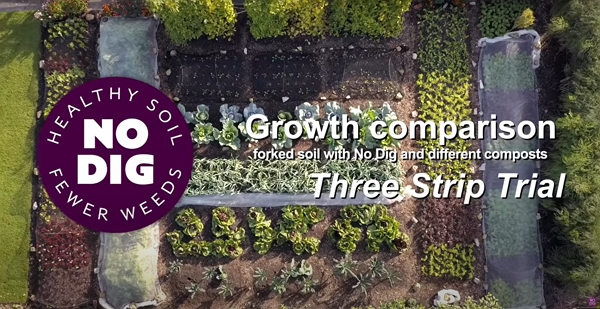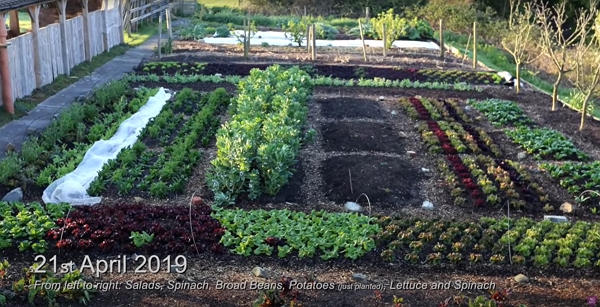I took notes about the trial at a later stage in an earlier article about the same three-strip trial, which started in 2014.
Thanks to Charles Dowding for sharing his wisdom and knowledge! I wrote the following notes watching the video published on Charles Dowding’s channel. You can watch it using this YouTube link.
They shot the vlog on the 8th of September 2019. So this is the 6th year of doing this comparison.
Charles says it’s a trial, but you could call it an experiment, but it’s not a scientific experiment as such.
It’s comparing things.
The strip One and Two setup
Strip One
Charles puts a fork in the ground and levers it to loosen the soil, e.g., broad forking.
And the idea being to just see what difference that it makes to growth compared to no dig.
Strip Two
It’s a No Dig strip with the same compost as strip One.
Strip Three
It’s a No Dig strip with the well-rotted cow manure.
Soil and amendment composition
The first two strips have the same amount of compost put on at the same time.
Charles uses mushroom compost and green waste compost on strips One and Two.
What Charles cultivated
The same plants are planted at the same time in each of the strips.
In the winter and spring months, the strips have:
- Spinach
- Lettuce
- Potatoes
- Broad beans
- In Winter squash
- In Winter salad
In the summer and autumn months, the strips have:
- Kale
- Chicory
- Leeks
- Cabbage
- Spinach
- Climbing beans
The goal
Charles wanted to compare what effect does that forking, if any, have on growth over the first five years.
Observations after five years between strip One and strip Two
They observed a 5% production different consistently over the five years, especially in the summer.
Observations after five years between strip Two and strip Three
The crops look bigger on strip Three, but pest damage offset the harvest yields.
Indeed, slugs attack the plants, but not always.
Also, Charles weights the harvest but discarding the outer leaves and anything that you wouldn’t eat or sell.
And he observed that strip Three produced more waste over time.
In the end, the strip Two is the best strip.

